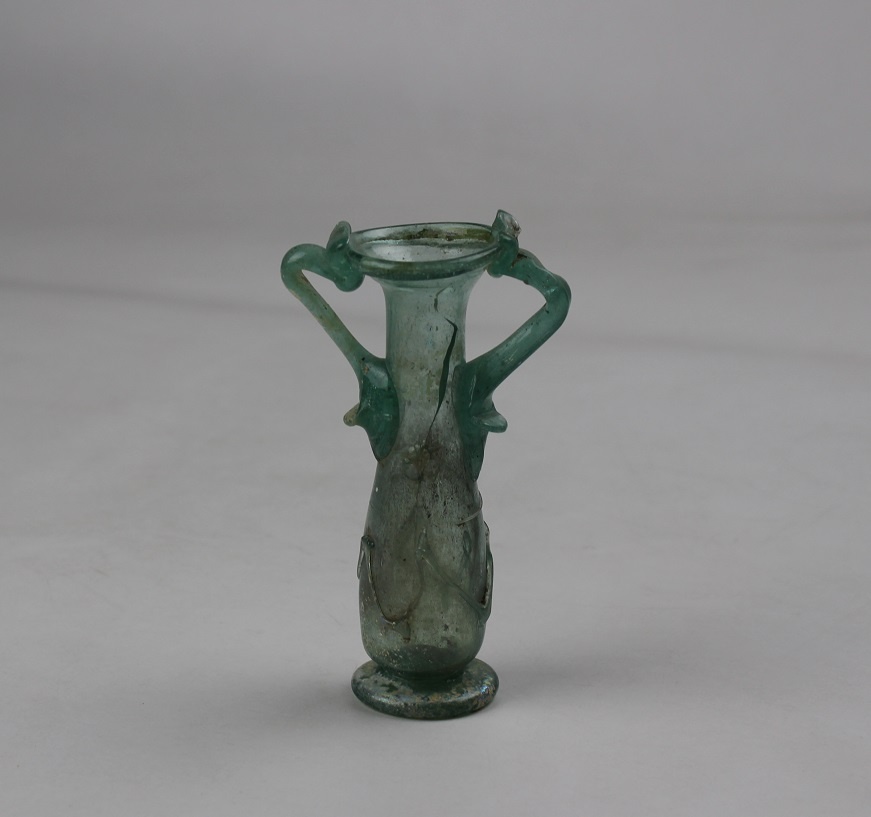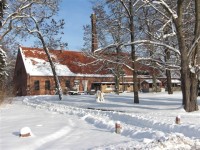Balsamarium, römisch / Rheinland, 4. Jahrhundert nach Chr.
helles blaugrünes Glas, irisiert mit Fadenauflagen, hohler Standring mit Heftmarke,
Lippenrand nach innen umgebogen unter dem Henkelansatz Spiralfaden, darunter Zick-Zack-Faden,
Sprung in der Wandung
ANTIKE URSPRÜNGE AUßERHALB EUROPAS
Glas entstand als Hohlglas vor etwa 4000 Jahren in Mesopotamien.
Erste Glasrezepte sind in ägyptischen Quellen überliefert.
Eine Blütezeit erlebte die Glasherstellung im Römischen Reich,
begünstigt durch die Erfindung der Glasmacherpfeife (1. Jh. v. Chr.).
Die Überlieferung des Glaskönnens in die europäische Neuzeit
verdankt sich wesentlich dem islamischen Kulturraum
und Klosterglashütten.
en

